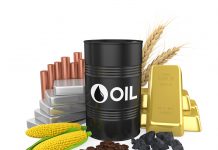
Supply concerns and high demand pushed domestic aluminium prices to an all-time high recently. Government induced output curbs scaled the most active SHFE rates to a 13-year peak while the benchmark LME three-month futures rallied to its highest level since 2011 due to shrinking inventories.
In MCX, aluminium futures started the year close to Rs 160 a kg, gradually it gained traction towards a record high of Rs 215.20 a kg. In the last one-year period prices gained a whopping 47 percent in domestic market itself. The trend was not different in the benchmark London futures and the key Shanghai futures. Prices in both markets gained 55 and 45 percent respectively in the last 12-month period.
The energy sensitive metal got boosted in the domestic market due to reports of a shortage of coal at several power plants in the country. India is the second biggest producer of primary aluminium and shortages of coal raised concerns about a serious disruption of domestic output. The coal-fired electricity and crude derivatives are the main sources of energy which accounts almost half of the production cost of aluminium in the country.
Output cuts from China too reduced the global supplies and lifted prices higher. Various Chinese regional governments have been forcing high energy sensitive smelting companies to curb production for reducing emissions.
So far this year, China has cut more than 2 million tonnes of production capacity of aluminium due to the regulators-imposed restrictions. China produces more than half of the world’s aluminium output. The country is the world’s largest producer and consumer of the silvery white metal. The smelting industry in the country used almost 7 percent of electricity supply in the last year. This has prompted several regional governments to take measures to use electricity more carefully.
Recently, the Xinjiang region in China, the major smelting hub in the country which accounts about one-fifth of the world’s total supply, imposed output limits on five aluminium smelters. This was part of efforts to stamp out illegal production in the country.
Shortage of domestic supply may increase China’s net aluminium imports this year. It is expected that the country may import about 1.1 million tonnes, slightly higher than the previous year’s bumper inflows of 1.05 million tonnes. Though China had little need of overseas aluminium in the past several years, the arbitrage opportunity between Shanghai and London prices makes imports favourable.
Worries over tight supply and growing demand for the metal in the areas of automobiles and packaging following a swift bounce back in the global economy are expected to support the metal. China’s economic growth has swiftly turned to the pre pandemic levels in the first quarter of the year. Likewise, the US and other European countries also reported robust economic numbers indicating a stable growth in factory and industry activities worldwide.
The supply-demand dynamics and the performance of the US currency continues to influence the short-term outlook of the commodity. Though China’s economy rebounded to its pre-pandemic growth levels, its businesses are grappling with higher cost and supply bottlenecks, thus is losing its steam. Extreme weather and a fresh outbreak of Covid -19 which swept across the country are likely to make Chinese economy more slower than expected in coming months and that may weigh on the prices of the metal.








